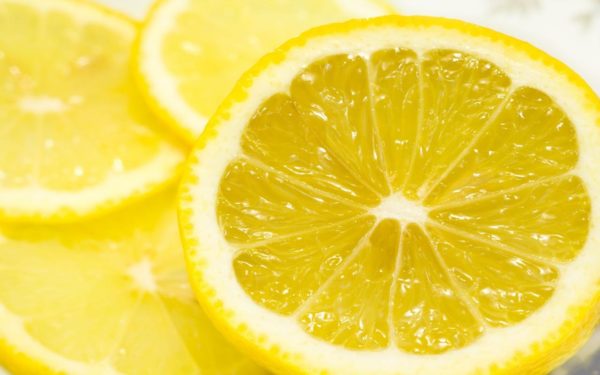1412.18
Author: Alla
No comments yet
Horseradish is used in cooking to prepare various dishes and sauces; it is part of many spices.
In addition to its pungent and interesting taste, horseradish is very healthy, but after lying for 10-12 hours it loses its nutrients. Therefore, you need to use it as soon as possible after cleaning. But it’s not so easy to rub it without tears.
Grating horseradish is even more difficult than chopping onions. The root vegetable contains essential oils, which quickly evaporate and reach the mucous membranes of the eyes. Therefore, redness, itching and other unpleasant phenomena occur. Therefore, grating horseradish is problematic, especially in large quantities.
Before you start chopping the roots, they need to be washed and cleaned. To reduce the amount of essential oils and make cleaning easier, the roots are placed in cold water for 4-6 hours.
![]()
Devices for grinding horseradish
To reduce the effect of oils on mucous membranes, it is better to clean and grate horseradish in the fresh air. If this is not possible, then during work you need to open the window and turn on the hood so that the particles evaporate faster.
For work, you may need any chopping devices that are in the kitchen.
The most difficult way is to grate, but unlike other devices, it is found in every home. Especially if you need to grate a small amount of horseradish. It must be grated on the finest grate so that it can be used for preparing various sauces.
![]()
How to properly store horseradish
If you grow horseradish yourself, then first of all you need to harvest it correctly. There are varieties of horseradish that are spring or autumn. The horseradish root along with the leaves is carefully dug up and cleared of soil. There is no need to wash the roots stored for storage; they are better preserved in their own earthen clothing. The leaves are trimmed and the roots are placed in a warm, ventilated place to dry. Only whole roots are suitable for storage. Horseradish with minor flaws should be used immediately. If there is a cellar, then the horseradish roots are laid in a dark, dry place. But at home, it is best to use a refrigerator.
Methods for grinding root vegetables
Cooks go to great lengths to reduce the negative consequences of working with horseradish. Someone puts on goggles and respirators, this process turns into fun entertainment for the whole family. But there are simpler options.
Grater and plastic bag
A simple and inexpensive method, but relatively labor-intensive and time-consuming. The process consists of:
- Root cleaning;
- The roots and grater are placed in a bag that closes tightly;
- The root is taken in the hand and rubbed, while being careful not to damage the integrity of the package;
- At the end of the work, the bag is untied and the resulting shavings are transferred to the desired container in which the horseradish will be stored or used for further cooking.
The disadvantage of this method is that it is difficult to work with and rubbing in a bag is inconvenient. But, despite this, the mucous membranes will not be exposed to burning oils.
![]()
How to wash your hands after processing horseradish
Having cleaned the roots, we are faced with another problem - dirty hands. It's quite easy to deal with:
- Cut 2 slices of lemon.

Lemon is a proven remedy for removing dirt from under nails and cleansing the skin of hands. - Rub your palms with juice.
- Dip your fingers into the pulp for 1–1.5 minutes.
- Wash your hands with warm water and mild soap.

After treating with lemon juice and pulp, you should wash your hands with warm soapy water. - Apply nourishing cream.
If you peel horseradish without gloves, your hands will turn dark. The juice penetrates especially deeply into cracks and hangnails. You won't be able to wash your skin with soap and warm water. Lemon, vinegar, a 3% solution of hydrogen peroxide or a bleaching agent, such as Domestos, will help restore it to its previous appearance.
The latter is bad for the skin, and your hands will smell unpleasant later. It's better to rub it with a slice of lemon. Its acid whitens skin and nails well. If there is no lemon, then use regular table vinegar.
![]()
A brush will also help to wash your hands after peeling horseradish.
If the contamination is very strong, then a warm bath with ammonia and peroxide will help. But the method is unsafe: there is a high probability of poisoning by the vapors emitted by such a mixture.
- Pour 2 cups of warm water into a suitable container (the hotter the better).
- Add 10 ml hydrogen peroxide, 1 tsp. ammonia and 3 tbsp. l. dishwashing detergents.
- Stir.
- Immerse your hands in the resulting solution for a few minutes, but no more than 10.
- Take a soft brush and clean your hands.
- If you are unable to completely wash your skin, treat it with a cosmetic disc soaked in peroxide.
![]()
Hands can be rubbed with a 3 percent hydrogen peroxide solution to cleanse the skin
If you can't stand the smell of ammonia, you don't have to use it. It is also safer for health, although the results will be worse.
Using the methods described above, you can wash your hands after peeling not only horseradish, but also any other vegetables. But it is better to work with gloves.
Peeling horseradish is easier than it seems. The main thing is to have the right tools and a good mood. Using the tips described, you will quickly complete the task.
We invite you to familiarize yourself with: The best varieties of carrots for Siberia
Tags: rub, tear, horseradish
About the author: admin4ik
« Previous entry
Meat grinder to the rescue
In a meat grinder, horseradish is processed quite quickly, but for large volumes you can resort to two main methods of grinding horseradish:
First freeze the roots, then grind them in a meat grinder. In this case, it is better to cut the roots into thin strips and put them in the freezer for 3-5 hours, then defrost them a little and process them;
When working with a modern electric meat grinder, there should be no problems with processing; the main thing is to put a food-grade plastic bag over the hole from which the twisted horseradish will come out and tie it tightly.
![]()
How to properly and quickly clean the root
Since horseradish produces substances that cause lacrimation, it is important to greatly reduce the discomfort associated with this. There is only one way to do this - to provide for all the nuances of preparation and the peeling process itself.
Horseradish roots about 30–50 cm long and about 3–6 cm in diameter, dug up in September, are ideal for harvesting.
![]()
Horseradish dug up in September is considered the most evil.
To work you will need any of the following tools:
- a sharp knife (it cuts the skin thinly);
![]()
A sharp knife is needed to peel horseradish roots.
![]()
You can remove the skin from the horseradish roots using a vegetable peeler, which in most cases is used to peel carrots or potatoes.
![]()
You can quickly clean young horseradish roots from dirt using a steel wool.
Preparatory work
This stage includes only two steps:
- Place fresh horseradish in cold water for 5–6 hours, and if the vegetable has already been sitting, soak it in water for 3–7 days. These procedures will give the skin elasticity and can help effectively remove dirt.
- Place the horseradish in the freezer for 1.5–2 hours: this will peel off the skin faster.
Peeling
There are several options for easily and quickly removing the skin from the root.
Peeling horseradish with a knife
- Soak the vegetable in water, wash it well and trim off the root tendrils and hard-to-reach dirt spots.
- Moisten the horseradish with a napkin.
- Use a knife to trim thin strips of peel.
![]()
To peel horseradish, the knife must be sharp.
The advantages of the method are speed, accuracy (no peelings fly around), but the disadvantage is that the root itself is cut off at the same time as the skin.
Using a Vegetable Peeler
- Wash the roots well.
- Lightly moisten them with a napkin.
- Scrape the skin off the horseradish with a vegetable peeler.
![]()
Using a vegetable peeling device, removing the skin from horseradish will not be difficult.
The positive quality of the method is that it reduces the volume of waste, but the disadvantage is that it is not always possible to check the direction of flight of the skins. It’s also worth saying that fans of preparations with horseradish say that using a knife still cleans the roots a little faster.
Video: two ways to peel horseradish
Unusual approach
If the young roots are approximately the same size, this method is suitable:
- Rinse the vegetable well.
- Using a sharp knife, trim off tendrils, flaccid ends and other unused parts of the stems.
- Use a toothbrush to clean off any remaining dirt and rinse again with water.
![]()
Before peeling the horseradish root, the flaccid edges must be trimmed.
A Karcher mini-wash will help you solve the problem even faster. If you have this device, use it to quickly remove the peel by placing the washed horseradish roots in a mesh with very small cells in advance.
Video: cleaning horseradish using a Karcher device
Blender
It is better to use a stationary blender with a power of more than 700 W. The roots are washed and cleaned. For convenience, they are cut into small plates and placed in a blender bowl. The fruit is quite hard and fibrous, so you can add a little water to it without filling the bowl to the top. Water is not added immediately; if the spruce roots will be finely chopped, you don’t have to add water.
When the horseradish is chopped, you can transfer it to a suitable container, and wash the blender thoroughly with warm water. The advantage of this method is the speed of processing and the ability to use roots of any size and shape.
![]()
Why does horseradish grow so much?
The unpretentiousness of the plant and its adaptability to any type of soil, undemandingness to moisture and a powerful root system that forms labyrinths of interlacing up to 7 meters long turn horseradish into an indestructible weed. After the destruction of the above-ground part, the roots continue to spread throughout the area and give rise to new shoots.
The plants are reminiscent of the fairytale Serpent Gorynych, who instead of one severed head grew three more. That's why it's so difficult to fight him. And not everyone is able to maintain the cultural rank of these powerful bushes with inconspicuous small panicles of inflorescences.
Correct and quick cleaning of horseradish
Horseradish contains substances in its structure that can cause tearing, so it is important to choose the right cleaning method so as not to expose yourself to inconvenience. If you take into account all the subtleties, then preparing the product will not be difficult.
The ideal option would be to use horseradish roots 50-60 centimeters long, since these are ripe fruits that are dug up in September. They are filled with useful substances and minerals, so the benefits to the body will be enormous.
To clean fruits, you need to acquire the following tools to choose from:
- A sharp knife used for cutting thin skin.
- A knife for peeling vegetables.
- A steel wool scourer that is suitable for cleaning soft skins. For young shoots, this type of device is ideal, but if you need to prepare mature roots, then the method should be more practical.